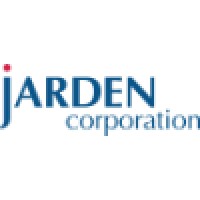Company Cyber Security Posture
NANA
NA Company Details
NA
NA
NA
NA
NA
NA
Scan still pending
NA
NA
Between 200 and 800
This score is AI-generated and less favored by cyber insurers, who prefer the TPRM score.
 NA Global Score
NA Global Score.png)

Company Scoring based on AI Models
| Model Name | Date | Description | Current Score Difference | Score |
|---|---|---|---|---|
| AVERAGE-Industry | 03-12-2025 | This score represents the average cybersecurity rating of companies already scanned within the same industry. It provides a benchmark to compare an individual company's security posture against its industry peers. | N/A | Between 200 and 800 |
Company Cyber Security News & History
| Entity | Type | Severity | Impact | Seen | Url ID | Details | View |
|---|
Company Subsidiaries

NA
Access Data Using Our API

Get company history
.png)
NA Cyber Security News
JSW Steel and JFE to manufacture CRGO steel in India via JV
CRGO steel is a crucial material used in the manufacturing of transformers.. JSW Steel and JFE to manufacture CRGO steel in India via JV.

NA Similar Companies

Godrej & Boyce Mfg. Co. Ltd.
Godrej is one of India’s most trusted brands serving over 1.1bn customers worldwide, every day. Godrej & Boyce, a Godrej group company, began it's journey in 1897 with the manufacture of high quality locks and continues with its outstanding engineering capabilities across diverse categories – from

Henkel
Henkel operates worldwide with leading innovations, brands and technologies in two business areas: Adhesive Technologies and Consumer Brands. Founded in 1876, Henkel looks back on more than 145 years of success. The company holds leading positions with its two business units in both industrial and

Kimberly-Clark
As a Kimberly-Clark employee, you have an opportunity to impact billions of lives through the products we make, the workplaces we create and the communities we serve. The proof is in our purpose – Here, we are creating Better Care for a Better World and it starts with YOU! Learn more about us and se

Kareila Management Corporation
S&R is a membership-shopping club modeled after the warehouse membership shopping chains in the United States. Why Join Us? We are one of the fastest growing companies in South East Asia. With our massive expansion in different locations in the Philippines, there is a high opportunity for career g

Schaeffler
The Schaeffler Group has been driving forward groundbreaking inventions and developments in the field of motion technology for over 75 years. With innovative technologies, products, and services for electric mobility, CO₂-efficient drives, chassis solutions and renewable energies, the company is a r

Jarden Corporation
Jarden Corporation is now part of Newell Brands, a global consumer goods company with a strong portfolio of well-known brands, including Paper Mate®, Sharpie®, Dymo®, EXPO®, Parker®, Elmer’s®, Coleman®, Jostens®, Marmot®, Rawlings®, Irwin®, Lenox®, Oster®, Sunbeam®, FoodSaver®, Mr. Coffee®, Rubbe

Frequently Asked Questions
Explore insights on cybersecurity incidents, risk posture, and Rankiteo's assessments.
NA CyberSecurity History Information
How many cyber incidents has NA faced?
Total Incidents: According to Rankiteo, NA has faced 0 incidents in the past.
What types of cybersecurity incidents have occurred at NA?
Incident Types: The types of cybersecurity incidents that have occurred include .
Additional Questions
What Do We Measure?
















Every week, Rankiteo analyzes billions of signals to give organizations a sharper, faster view of emerging risks. With deeper, more actionable intelligence at their fingertips, security teams can outpace threat actors, respond instantly to Zero-Day attacks, and dramatically shrink their risk exposure window.
These are some of the factors we use to calculate the overall score:
Identify exposed access points, detect misconfigured SSL certificates, and uncover vulnerabilities across the network infrastructure.
Gain visibility into the software components used within an organization to detect vulnerabilities, manage risk, and ensure supply chain security.
Monitor and manage all IT assets and their configurations to ensure accurate, real-time visibility across the company's technology environment.
Leverage real-time insights on active threats, malware campaigns, and emerging vulnerabilities to proactively defend against evolving cyberattacks.




